The Owl of Minerva from Dusk till Dawn, or, Two Shades of Gray
Апстракт
The paper takes as its starting point the figure of the owl as the emblem of philosophy, it looks at its history and takes up its most significant philosophical use, the notoriouspassage where Hegel uses the owl as the indication of philosophy's necessary belatedness. This is the passage which is usually taken as the point of indictment of Hegel’s position and the role he ascribed to philosophy. Hegel’s adage ‘What is rational is actual, and what is actual is rational’ is scrutinized in its various aspects, particularly in view of its other version, ‘what is rational must happen’. The tension between the ‘is’ and the ‘ought’ is perhaps the clue to understanding this adage, where Hegel doesn’t opt for the one or the other, but aims at the paradoxical intersection of the two. Hegel’s adage is put in contrast with Marxs Thesis Eleven. The paper considers the concepts of the rational, the actual, the belatedness/retroaction, the grayness and finally the owl (and the part that bestiary play...s in philosophy), thus trying to circumscribe the task that should be assigned to philosophy.
Кључне речи:
Hegel, Georg Vilhelm Fridrih / owl of Minerva / reason / actuality / retroactionИзвор:
Filozofija i društvo/Philosophy and Society, 2015, 875-890Издавач:
- Beograd : Institut za filozofiju i društvenu teoriju
Институција/група
IFDTTY - JOUR AU - Dolar, Mladen PY - 2015 UR - http://rifdt.instifdt.bg.ac.rs/123456789/332 AB - The paper takes as its starting point the figure of the owl as the emblem of philosophy, it looks at its history and takes up its most significant philosophical use, the notoriouspassage where Hegel uses the owl as the indication of philosophy's necessary belatedness. This is the passage which is usually taken as the point of indictment of Hegel’s position and the role he ascribed to philosophy. Hegel’s adage ‘What is rational is actual, and what is actual is rational’ is scrutinized in its various aspects, particularly in view of its other version, ‘what is rational must happen’. The tension between the ‘is’ and the ‘ought’ is perhaps the clue to understanding this adage, where Hegel doesn’t opt for the one or the other, but aims at the paradoxical intersection of the two. Hegel’s adage is put in contrast with Marxs Thesis Eleven. The paper considers the concepts of the rational, the actual, the belatedness/retroaction, the grayness and finally the owl (and the part that bestiary plays in philosophy), thus trying to circumscribe the task that should be assigned to philosophy. PB - Beograd : Institut za filozofiju i društvenu teoriju T2 - Filozofija i društvo/Philosophy and Society T1 - The Owl of Minerva from Dusk till Dawn, or, Two Shades of Gray SP - 875 EP - 890 DO - 10.2298/FID1504875D ER -
@article{
editor = "Jovanov, Rastko",
author = "Dolar, Mladen",
year = "2015",
abstract = "The paper takes as its starting point the figure of the owl as the emblem of philosophy, it looks at its history and takes up its most significant philosophical use, the notoriouspassage where Hegel uses the owl as the indication of philosophy's necessary belatedness. This is the passage which is usually taken as the point of indictment of Hegel’s position and the role he ascribed to philosophy. Hegel’s adage ‘What is rational is actual, and what is actual is rational’ is scrutinized in its various aspects, particularly in view of its other version, ‘what is rational must happen’. The tension between the ‘is’ and the ‘ought’ is perhaps the clue to understanding this adage, where Hegel doesn’t opt for the one or the other, but aims at the paradoxical intersection of the two. Hegel’s adage is put in contrast with Marxs Thesis Eleven. The paper considers the concepts of the rational, the actual, the belatedness/retroaction, the grayness and finally the owl (and the part that bestiary plays in philosophy), thus trying to circumscribe the task that should be assigned to philosophy.",
publisher = "Beograd : Institut za filozofiju i društvenu teoriju",
journal = "Filozofija i društvo/Philosophy and Society",
title = "The Owl of Minerva from Dusk till Dawn, or, Two Shades of Gray",
pages = "875-890",
doi = "10.2298/FID1504875D"
}
Jovanov, R.,& Dolar, M.. (2015). The Owl of Minerva from Dusk till Dawn, or, Two Shades of Gray. in Filozofija i društvo/Philosophy and Society Beograd : Institut za filozofiju i društvenu teoriju., 875-890. https://doi.org/10.2298/FID1504875D
Jovanov R, Dolar M. The Owl of Minerva from Dusk till Dawn, or, Two Shades of Gray. in Filozofija i društvo/Philosophy and Society. 2015;:875-890. doi:10.2298/FID1504875D .
Jovanov, Rastko, Dolar, Mladen, "The Owl of Minerva from Dusk till Dawn, or, Two Shades of Gray" in Filozofija i društvo/Philosophy and Society (2015):875-890, https://doi.org/10.2298/FID1504875D . .



